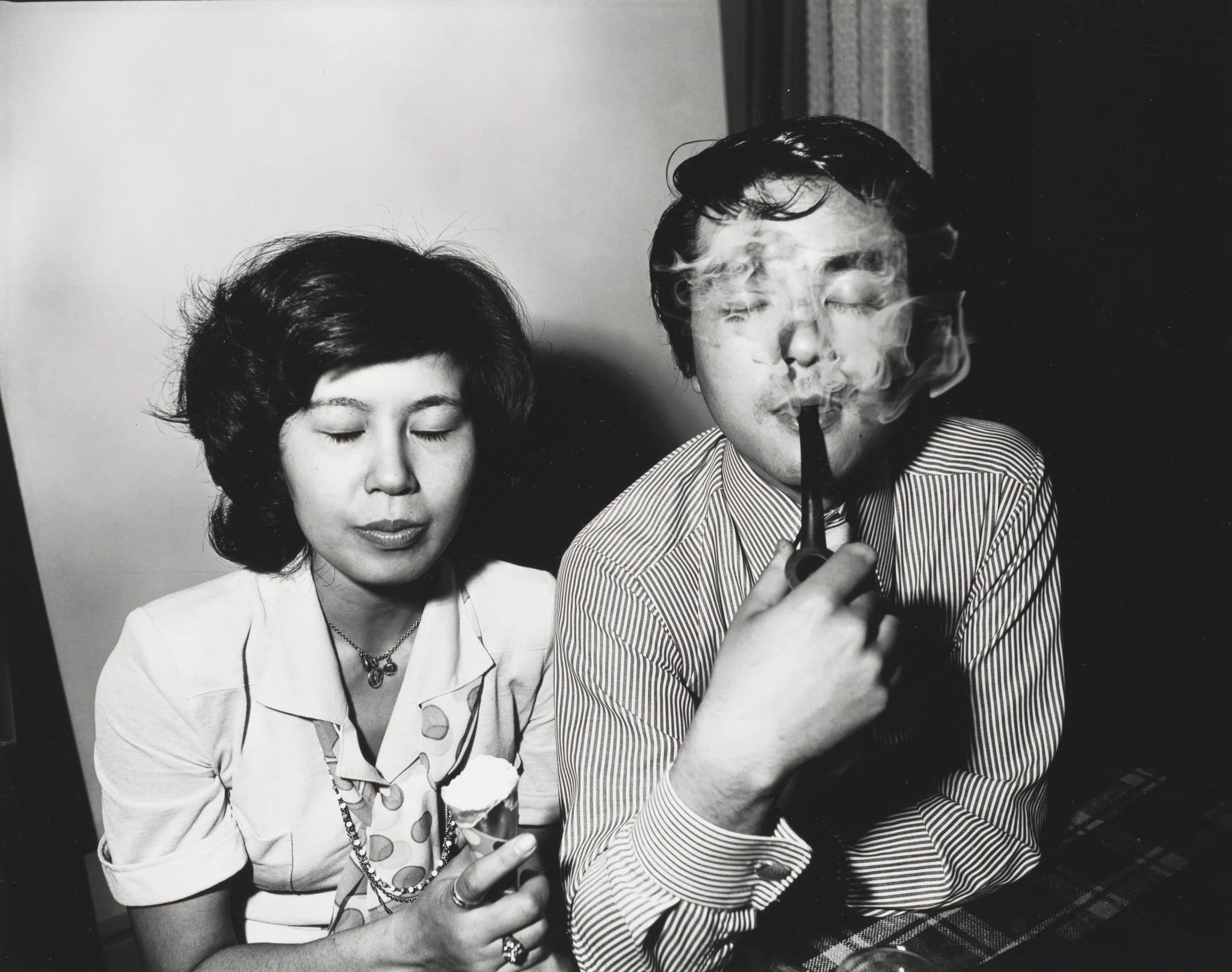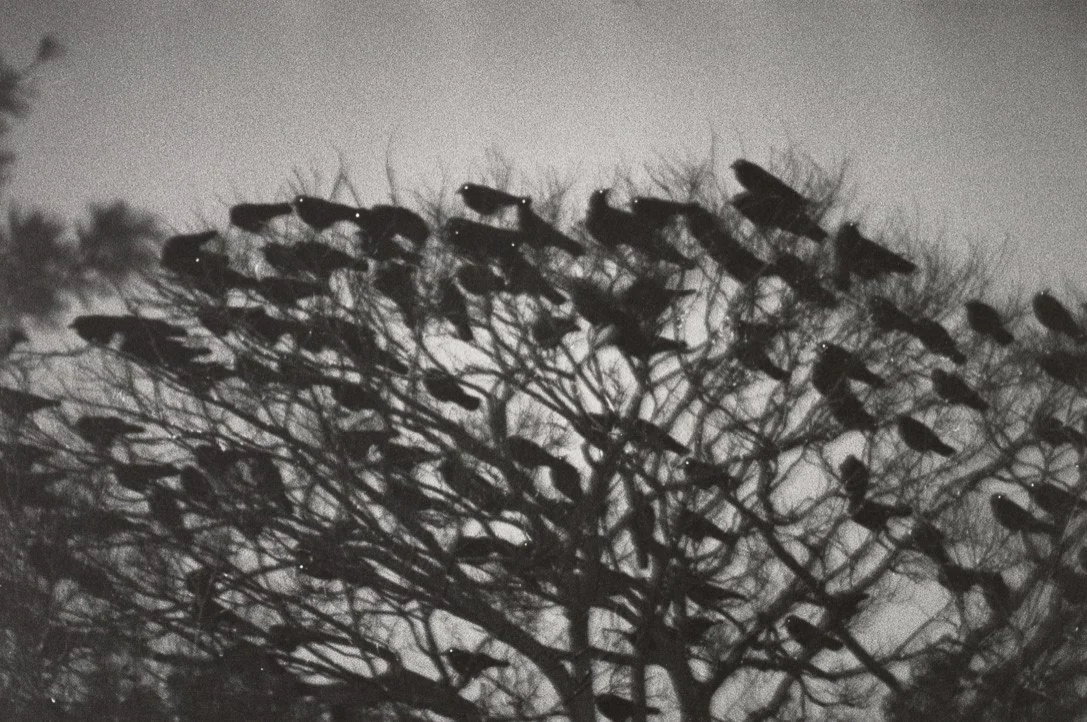Exhibition Review: Farewell Photography: The Hitachi Collection of Postwar Japanese Photographs, 1961-1989
Kikuji Kawada, New Couple Who Closed Their Eyes, Tokyo, 1974. Gelatin silver print. Center for Creative Photography, University of Arizona: Purchase, with matching funds from Hitachi America, Ltd. © Kikuji Kawada
Written By: Sophie Yates
In the period following World War II, Japan underwent many radical changes including American occupation and Westernization. In the midst of change arose a new approach to photography: are-bure-boke, translated to “rough, blurred, and out-of-focus.” From now through June 26, the Phoenix Art Museum will hold an exhibition exploring are-bure-boke photographs from post-World War II Japan titled Farewell Photography: The Hitachi Collection of Postwar Japanese Photographs, 1961-1989. The exhibition includes 87 works by 19 Japanese photographers, all sourced from the Center for Creative Photography.
Masahisa Fukase, Ishikawamon, Kanazawa, 1977. Gelatin silver print. Center for Creative Photography, University of Arizona: Purchase, with matching funds from Hitachi America, Ltd. © Masahisa Fukase, courtesy Robert Mann Gallery
One of the photographers featured in the exhibit, Kikuji Kawada, became widely known from his poetic and symbolic work depicting post-war Japan. He commonly included abstracted surfaces in his images, and his projects following the war explored the shift from abstractism to realism. His black-and-white image, New Couple Who Closed Their Eyes, Tokyo, 1974, depicts a woman and a man sitting next to each other while the man blows smoke into the air. The work gives a feeling of realism, as if it were captured as the couple was naturally going about their day. Kawada’s other work being featured in the exhibition, Floating Fish and a Photographer, is a dark image with a small silhouette of a person taking a photograph of a bright fish. Artistically, the image is in line with the are-bure-boke approach because of it’s stark light contrasts.
Taku Aramasa, Yurio Hasegawa (Japanese), Zenji Watanabe (Japanese), Harunaga Hasegawa (Japanese), 1984. Gelatin silver print. Center for Creative Photography, University of Arizona: Purchase, with matching funds from Hitachi America, Ltd. © AMARASA Taku
Ikkō Narahara’s Japanesque #53, Sojiji, Japan, 1969, depicts a man running down a long, traditional hallway. With dark, black-and-white contrasts, the image feels unsettling. Motion of the man running causes blurriness of his silhouette, a common aspect of are-bure-boke photography. Looking at the photo induces feelings of urgency and panic. These feelings could be associated with the historical realities of Japan during this time, as the country was still recovering from the destruction of World War II.
Ikkō Narahara, Japanesque #53, Sojiji, Japan, 1969. Gelatin silver print. Center for Creative Photography, University of Arizona: Gift of the artist. © Ikko Narahara
Following along with the black-and-white, blurred, and darkly contasted theme, Masahisa Fukase’s Ishikawamon, Kanazawa, 1977, shows the top of a winter tree with dozens of birds standing in it. Chaotic and crowded because of all of the branches going different directions and birds filling the space, Fukase’s work reflects the expressive and modern nature of Japanese photographs in the post-war period. Instead of an objective approach, images like this cause viewers to wonder what the contents were and develop their own meaning for it. Fukase was one of the many non-conformists in photojournalism that rose to popularity at the time.
Michiko Kon, Yellowtail and Comb, ca. 1985. Gelatin silver print. Center for Creative Photography, University of Arizona: Purchase, with matching funds from Hitachi America, Ltd. © Michiko Kon, courtesy Robert Mann Gallery
Many more images are included in the Farewell Photography: The Hitachi Collection of Postwar Japanese Photographs, 1961-1989 exhibition. It will run until June 26, and more information about the exhibition can be found at the Arizona Art Museum’s website.
Photo Edited by Lenin Arache












